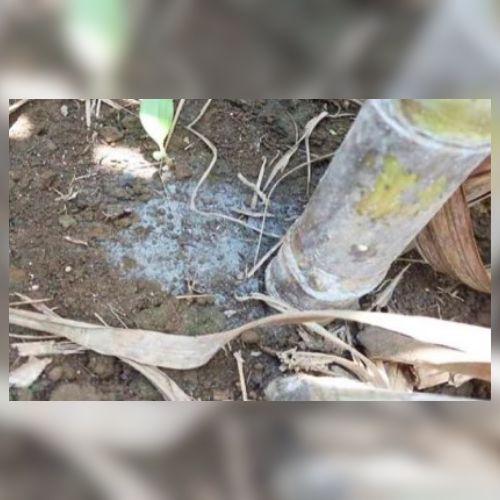The Sugar Regulatory Administration reported that the volcanic ash fall caused by the eruption of Mt. Kanlaon last Monday night has increased the level of acidity in both sugar cane leaves and the soil in affected areas.
The pH level, which is used to indicate the level of acidity, registered 4.14 pH on sugar cane leaves and 5.06 pH in the soil the morning after the ash fall, both results indicating increased acidity as compared to the 6.48 pH of the ground tested last week, according to SRA head Pablo Luis Azcona.
In a statement, Azcona said “the pH level of 7 is neutral but years of tilling sugar fields has affected our soil and the 6.48 pH result last week should have been ideal.”
“With the current results after the ash fall, if this will not be washed out by rains, we will need soil rejuvenation in affected sugar lands to bring it back to the ideal state, and that is long term.”
Azcona added that as of now it is too early to tell whether the volcanic ash will cause much damage to crops as it had been raining on the affected places, so hopefully the acidity will be diluted.
In a report presented by the Research and Development arm of the agency that conducted tests in the La Granja Research Station in La Carlota on Tuesday, the immediate effects of volcanic ash can cause physical damage on the leaves, reducing its photosynthesis capability and biological and chemical disruption on the soil, which can all lead to reduction of yield.
Its long term effects on sugar crops, on the other hand, can cause nutrient imbalance in soil, compaction and erosion, and chemical leaching that may reduce the soil’s pH level.
The SRA team was accompanied in collecting ash samples by researchers of the Japan International Research Center for Agricultural Sciences (JIRCAS), who are in town for a long term research cooperation.
About 23,000 hectares in four sugar mill districts may be affected by the volcanic eruption.
Azcona said that SRA will continue to monitor pH recovery, and what needs to be done, and has assigned field personnel, including SRA Board Member David Sanson to go around affected areas and coordinate with the farmers.
The research team said the volcanic eruption cannot be ignored as there have been records that it can adversely affect agricultural productivity, such as in the 1991 eruption of Mt. Pinatubo and the 2010 eruption of Eyjafjallajökul in Iceland, that disrupted sugarcane farming in parts of Europe due to ash fallout and subsequent atmospheric changes.
Among the mitigating measures they recommend, if ash fall continues, is the use of cover crops, irrigation by washing off plants and soil, and applying lime or organic matter to neutralize soil pH changes caused by the ash fall. In the long run though, sugar farmers can benefit in due time from volcanic ash fall as it is rich in minerals and nutrients such as potassium, phosphorus, and trace elements, which can enhance soil fertility over time and improve crop yields.
The fine particles in volcanic ash can also improve soil texture and water retention, aiding root growth and reducing the need for frequent irrigation, and can act as a natural pesticide by creating a physical barrier that deters pests and disrupts their life cycles, reducing the need for chemical interventions, the report said.
Meanwhile, SRA will also be assisting the Department of Environment and Natural Resources in ambient air monitoring in affected areas.
In its letter to SRA, DENR Assistant Division Chief, Cliff Jeffersonn Escobar said they only have the capability and equipment to monitor the particulate matter in ambient air in two stations in La Carlota City and the town of La Castellana, and asked SRA to monitor the ambient air in Bacolod City, where the smell of sulfur was detected on the night the volcano erupted. (Gilbert Bayoran via The Visayan Daily Star)

